ЗАБАЙКАЛЬЕ. Пояснительная записка Учебное пособие составлено в качестве приложения к умк по английскому языку в виде регионального социокультурного компонента и предназначено
 Скачать 498.12 Kb. Скачать 498.12 Kb.
|
|
VΙΙ. Translate into English. Территория Забайкалья настолько велика, ландшафты настолько разнообразны, что невозможно беглым взглядом охватить и сразу влюбиться в природу этой земли. При площади территории 431,5 тысяч квадратных метров численность населения – около 1,3 миллиона человек, причем сосредоточено оно в основном в южных районах. Тектонические горообразовательные процессы, ледниковые периоды, чередующиеся с периодами глобальных потеплений, создали современный контрастный рельеф, меняющийся от холмистых степей до гор альпийского типа. Посреди бескрайней холмистой степи с табунами коней и стадами верблюдов лежат два огромных горько-соленых озера – Зун – Торей и Барун – Торей, где гладь воды у горизонта сливается с небом. Совершенно удивительное по красоте место в Чарской долине – урочище Чарские пески. На территории Забайкальского края насчитывается около 15 000 озер и более 40 000 ручьев и рек. Характерная особенность региона – большое количество солнечных дней. VΙΙ. Answer the following questions. How large is the territory of the Zabaikalsky Krai? Where is the Zabaikalsky Krai situated? What rivers and lakes are there on the territory of Zabaikalie? The Zabaikalsky Krai is rich in natural resources, isn’t it? VΙΙΙ. Speak about the geographical position and the climate of Zabaikalie. V. Borders The krai has extensive international borders with China (998 km) and Mongolia (868 km) and internal borders with Irkutsk and Amur Oblasts, as well as with the Republic of Buryatia and the Sakha Republic. Zabaikalsky Krai is located in southeastern Siberia, the territory beyond Lake Baikal, and occupies an area of 431,500 sq. km, or 2,5 % of the total area of Russia. The area of the region is twice more than England and almost the same as Italy and Greece together. It is located between 490 N and 590 North Latitude, i.e. the latitudes of Poland, Great Britain and Canadian Columbia. Stretching 1,000 km north-south and 800 km east-west, the Zabaikalsky Krai is bordered by the Buryat Republic and Irkutsk Region to the west and north-west, the Yakutia-Sakha Republic to the north-east, and the Amur Region to the east. The southern border of the Zabaikalsky Krai adjoins Mongolia and China for 1.500 km. The Zabaikalsky Krai is the link between Siberia and the Russian Far East. Chita is located 6,704 km. from Moscow. Zabaikalsky Krai is located in remote Asia, thousands of kilometers from the nearest oceans. VI. Population Chita is home to peoples of more than 100 nationalities. The population of Zabaikalie approximately 1,3mln people. The list of nationalities living in Zabaikalie is long and includes Armenians, Buryats, Tatars, Bashkirs, Germans and many others. All of them are citizens of Chita and are proud that Zabaikalie has become their home. They are young, ambitious and motivated… They have various origins, traditions and culture but they are united by a common strong commitment to the world peace. The multinational youth of Zabaikalie wants to create a society based on national equality and solidarity. Chita is a multiconfessional city; its citizens respect traditions of Christian, Catholic, Muslim, Buddhist and Jewish traditions. In 2006 the construction of Orthodox Cathedral of the Kazan Icon of the Mother of God, the biggest cathedral in Siberia, was completed. In 2008 the Buddhist temple was reconstructed. As of a 2012 official survey 24.6% of the population of Zabaykalsky Krai adheres to the Russian Orthodox Church, 6.25% to Buddhism, 6% declares to be generically unaffiliated Christian (excluding Catholic and Protestant), 2% follows other Orthodox Churches. In addition, 28% of the population declares to be "spiritual but not religious", 17% to be atheist, and 16.15% follows other religion or did not give an answer to the survey. Answer the following questions. How large is the population of the Zabaikalsky Krai? What nationalities live in Zabaikalie? Chita is a multiconfessional city, isn’t it? Wnen was the construction of Orthodox Cathedral of the Kazan Icon of the Mother of God, the biggest cathedral in Siberia, completed? Find some words in the puzzle which characterize the religion of Zabaikalie.
Translate into English. Приблизительно Национальность Гражданин Традиции и культура Многонациональный Уважать Собор Храм Официальный опрос Русская Православная Церковь Буддизм Другая религия Мусульманин Make a word web to summarize the information about nationalities and religion of Zabaikalsky Krai. NATIONALITIES           RELIGION          VΙI. Nature My native land, The land of wonders. Of autumn falls and Summer thunders. The greenest hills And magic lakes, The tender breeze, Romantic dales... Amazing land! You give me wings, You give me strength! Many years ago while travelling to Sakhalin; Chekhov was greatly impressed by the nature of Zabaikalie. “Zabaikalie is magnificient! It is a mixture of Switzerland, the River Don and Finland”, he wrote. It’s no wonder. One can’t help admiring the blue sky with tiny white clouds moving about like beetles, lovely valleys with their fluffy blue carpeting in summer, and the hillocks seem to be playing a jolly game with all those colors, smells and bird sounds. The steppe, the grasses and the flowers very graciously escorted the rocks to where, unable to restrain themselves any longer, they erupted from the ground and fanned out in a charming design. In truth, there is nothing more amazing and eloquent than the silence of these wonderful rocks. Very soon one can find himself in the Siberian taiga. The huge trees growing about five yards away from the water’s edge, stand perfectly straight and motionless, as though numb with fear. The quivering depth seems to draw them like a magnet, and they come closer, bending lower and lower over the river. Breathtaking beauty, deadly tiredness, but not a deadening tiredness, and the pure, fresh joy of enchantment, a mood sublime and jubilant... They make such a beautiful picture that one feels a thrill of excitement. And now it is quite understandable why many poets and writers devoted their poems and notes to the nature of Zabaikalie. Zabaikalie is originally a land of vast forests, mainly pine, birch and larch. They are the commonest trees in the region. Besides, in our taiga you can find elm, asp, and alder. There are evergreen trees such as pines, fir-trees, silver fir trees, Siberian cedar. Animal life is various too. Many kinds of different animals live in forests and woods, fields and meadows: bears, wolves, foxes, hares, elks, lynxes, sables, squirrels, chipmunks, red deer, musk deer, north deer. When spring comes our woods and forests are filled with the songs of the birds. Among birds the most numerous are sparrows, ravens, magpies, tits, pigeons, woodpeckers. They are not migrated birds, they live here all the year round, and some birds such as swallows, swifts, wagtails, cranes, herons, larks fly away to warm lands in autumn and come back again in spring. The world of wild flowers, medical herb is various. The first spring flowers are blue crocuses, primroses and violets, and then we can see butter cups, king cups, forget-me-nots, dandelions, bluebells, pinks, lilies and foxgloves. What’s more, our region is rich in different berries: cowberries and blueberries. Our rivers and lakes are abundant in fish: pike, salmon, trout, grayling, perch and so on. Translate the sentences into Russian. Many years ago while travelling to Sakhalin Chekhov was greatly impressed by the nature of Zabaikalie. “Zabaikalie is magnificient! It is a mixture of Switzerland, the River Don and Finland”, he wrote. One can’t help admiring the blue sky with tiny white clouds moving about like beetles, lovely valleys with their fluffy blue carpeting in summer, and the hillocks seem to be playing a jolly game with all those colors, smells and bird sounds. Zabaikalie is originally a land of vast forests, mainly pine, birch and larch. Many kinds of different animals live in forests and woods, fields and meadows: bears, wolves, foxes, hares, elks, lynxes, sables, squirrels, chipmunks, red deer, musk deer, north deer and so on. Among birds the most numerous are sparrows, ravens, magpies, tits, pigeons, woodpeckers. The first spring flowers are blue crocuses, primroses and violets, and then we can see butter cups, king cups, forget-me-nots, dandelions, bluebells, pinks, lilies and foxgloves. Our rivers and lakes are abundant in fish: pike, salmon, trout, grayling, perch and so on. Complete the next sentences. Our region is rich in different berries: …………. . When spring comes our woods and forests are filled with …………. . There are evergreen trees such as…………… . Some birds such as swallows, swifts, wagtails, cranes, herons, larks fly away to warm lands in autumn and…………… . Our rivers and lakes are abundant……. . Make up the sentences. It/ wonder /is /no. is/ a /of /It /Switzerland/ Finland /the /River/ Don/ mixture/ and. forests/ is /a /land /of /vast/Zabaikalie. Animal/ various /life/ too/is. birds /are /not/ They /migrated. Connect the parts of the next sentences.
Fill in the blanks with the verb in the proper tense. Many kinds of different animals ……. in forests and woods, fields and meadows.(to live) When spring …… our woods and forests are filled with the songs of the birds.(to come) Very soon one can ….. himself in the Siberian taiga.(to find) And now it is quite understandable why many poets and writers ……. their poems and notes to the nature of Zabaikalie. (to devote) Solve the puzzle.Find asmany words as you can.
VIII. Chita-the capital of Zabaikalie Chita is the heart of Zabaikalie! Chita city flag 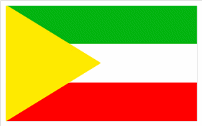 Chita city coat of arms 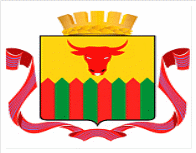 Chita history Chita was founded by Pyotr Beketov who together with a troop of Cossacks built Ingodinskoye winter hut in the Chita mouth. The first permanent Russian settlement in this place appeared after 1675, till 1687 it was called Sloboda (a large village). In 1699, Chitinsky stockaded town was built, from 1821 - settlement of Chita. In 1827, the Decembrists were exiled to this place. In 1851, the settlement received the status of a city and was renamed Chita. At the same time Chita became the center of Zabaikalskaya oblast (province) where there was the commandment of Zabaikalskaya Cossack army. After railway was constructed in 1900, Chita became a big transportation juncture and industrial center of Zabaikalie region. During the Russian Revolution, Chitinskaya Republic was declared in the city. Soviet power was established in the city in February 1918. From 1920 till 1922, Chita was the capital of Far Eastern Republic, from 1922 - the center of Zabaikalskaya gubernia. In 1926, Chita became a part of Far Eastern Republic, from 1937 - the center of Chitinskaya oblast. Since March 1, 2008, it is the administrative center of Zabaikalsky krai (region). Chita is an administrative center of the Trans-Baikal region. Chita was founded in 1653 as a silver-mining center. Closed in the Soviet era, today the city is open and prosperous. The city is a large railway juncture located about 6,200 km from Moscow. Chita is situated in Baikal area, where the river Chita flows into the Ingoda (the Amur basin). The city is a large industrial and cultural center of the country. Chita has the population of about 328,000 (2012) on the land area of 534 sq. km. Chita`s central square is nice and colorful especially in summer with blooming flower beds around a pink-granite Lenin statue. The golden domes of Chita`s recently built cathedral tower over the railway station square enticing train travelers to hop off and explore the city. 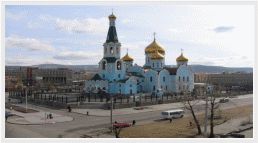 The Orthodox Cathedral of the Kazan Icon of the Mother of God Traditionally Chita is divided into four districts: Rail, Ingodinsky, Central, and Chernov. There are over 7000 plants and various economic institutions; most of them are of private type, 8 institutions of higher education, 11 technical schools, 4 research institutes, 12 museums, 2 theaters on the territory of the city. Due to its economical and geographical position which provides the shortest way from eastern regions of Russia, Eastern and Western Europe to China and South-Eastern Asia, Chita has a lot of potential functions. The main partners of the city in its cultural life and economic interrelations as usually are China and Mongolia. There are airports Kadala and Cheryomushki. Chita is a big railway juncture on Trans-Siberian railway. The administration of Zabaikalian railway is located in Chita; it controls the cargo freightage in the Republic of Buryatia, Zabaikalsky krai and Amurskaya oblast. Chita transportation includes trolley-buses, buses and minibuses. The city has a rich history which is carefully preserved by its citizens. Almost every school in Chita has a museum and a memorial corner. There are streets named after labour and Great Patriotic War heroes, various sports events are organized in commemoration of them. Chita citizens are proud of their famous people, among which are well known actors Yury and Vitaly Solomin and Olympic champion Lyudmila Titova. Write down the sentences in right order and translate them into Russian. In 1851, the settlement received the status of a city and was renamed Chita. Chita was founded by Pyotr Beketov who together with a troop of Cossacks built Ingodinskoye winter hut in the Chita mouth. The first permanent Russian settlement in this place appeared after 1675, till 1687 it was called Sloboda (a large village). In 1699, Chitinsky stockaded town was built, from 1821 - settlement of Chita. In 1926, Chita became a part of Far Eastern Republic, from 1937 - the center of Chitinskaya oblast. Since March 1, 2008, it is the administrative center of Zabaikalsky krai (region). During the Russian Revolution, Chitinskaya Republic was declared in the city. Soviet power was established in the city in February 1918. Complete the next sentences. Chita is an administrative center of the……… . Chita was founded by………… . Chita was founded in……….. . Chita has the population of …….. . Traditionally Chita is divided into…….. . Chita citizens are proud of their famous people, among which are well known actors…….. . Make up the sentences. in 1653/ Chita /founded /was /center/ as /a silver-mining. area/ Chita /in/ situated/ Baikal /is. square /colorful /central /is/ and /nice/ Chita`s administration / in /located /Zabaikalian /The / railway /is /of / Chita. Connect the parts of the next sentences.
V. Fill in the blanks with the verb in the proper tense. 1. Chita ……… an administrative center of the Trans-Baikal region. (to be) 2. Chita ……. founded by Pyotr Beketov. (to be) 3. The first permanent Russian settlement in this place ……. after 1675. (to appear) 4. In 1851, the settlement ……… the status of a city. (to receive) 5. The river Chita ……..into the Ingoda River. (to flow) Answer the following questions. When was Chita founded? Whom was Chita founded by? When did Chita become the center of Chitinskaya oblast? Is Chita an administrative center of the Trans-Baikal region? What can you say about the population of Chita? How many airports are there in Chita? What are they? Name the famous people of Chita. VII. Solve the puzzle. During the Russian Revolution Chitinskaya ……… declared in the city. The golden domes of recently built ……. tower over the railway station square enticing train travelers to hop off and explore the city. On the column in the center of central square there is the statue of …… . The capital of Zabaikalie was founded by …….. in 1653. The …….. of the city is about 328 000 people. The capital of Zabaikalie. 6 C H              2 1 I     3 T       4 A          5 ΙX.Gallery of Famous Chita citizens Famous people who were born in Chita  LipatovVilVladimirovich- Russian/soviet writer. His first short stories “Airplane fireman” and “Two men in sailor’s stripped vests” were published in 1956 in "Yunost"magazine, in 1958 his first book was published. But the books which brought Lipatov fame are “A legend of director Pronchatov”, novel “It is all about him” (and the script to thesimilarly-named film), short novel “Village detective” and scripts of the trilogy based on the short novel, narrating of the village policeman Aniskin (“Village detective”, “Aniskin and Fantomas”, “Aniskin once again”). LipatovVilVladimirovich- Russian/soviet writer. His first short stories “Airplane fireman” and “Two men in sailor’s stripped vests” were published in 1956 in "Yunost"magazine, in 1958 his first book was published. But the books which brought Lipatov fame are “A legend of director Pronchatov”, novel “It is all about him” (and the script to thesimilarly-named film), short novel “Village detective” and scripts of the trilogy based on the short novel, narrating of the village policeman Aniskin (“Village detective”, “Aniskin and Fantomas”, “Aniskin once again”).  Lundstrem Oleg Leonidovich - legendary Russian jazzman and composer, the founder and the leader of Oleg Lundstrem Jazz Orchestra. Lundstrem Oleg Leonidovich - legendary Russian jazzman and composer, the founder and the leader of Oleg Lundstrem Jazz Orchestra. His band is a permanent participant of large international jazz festivals: «Tallin-67», «Jazz Lamboree 72» in Warsaw, «Prague-78» and «Prague-86», «Sofia-86», «Jazz in Duketown-88» in Holland, the USSR arts festival in India(1988), «Grenoble-90» in France, Ellington jazz festival in Washington, USA (1991), big band festival «Imatra-92» in Finland, international jazz festival in Santa-Barbara (USA, 1998), a number of international festivals in the former Soviet Union. Oleg Lundstrem Jazz Orchestra became the most "long playing" in the world. The fact is registered in the Russian Guinness book of Records.  Paulus VladlenVladimirovich – soviet theatre and cinema actor. Graduated from the Moscow Art Theatre School (1957) and the Higher school of TV producers (1969). In 1957 to 1958 he was an actor in the K.S.Stanislavsky theatre, from 1958 to 1966 — an actor in«Sovremennik» theatre, from 1969 to 1970 — the central television director, from 1971 to 1974 — an actor of V.Mayakovski Academic theatre. Was filmed since 1962 (his first role was Shark Dodson in «Strictly Business»). Paulus VladlenVladimirovich – soviet theatre and cinema actor. Graduated from the Moscow Art Theatre School (1957) and the Higher school of TV producers (1969). In 1957 to 1958 he was an actor in the K.S.Stanislavsky theatre, from 1958 to 1966 — an actor in«Sovremennik» theatre, from 1969 to 1970 — the central television director, from 1971 to 1974 — an actor of V.Mayakovski Academic theatre. Was filmed since 1962 (his first role was Shark Dodson in «Strictly Business»). Sobchak Anatoly Aleksandrovich – Russian political figure, the first mayor of St. Petersburg, professor, Doctor of Law. Sobchak Anatoly Aleksandrovich – Russian political figure, the first mayor of St. Petersburg, professor, Doctor of Law. Solomin Vitaly Mefodyevich – soviet and Russian theatre and cinema actor, people’s artist of the RSFSR, Moscow award winner, member of the Union of Theatre Workers and The Union of Russian filmmakers. Solomin Vitaly Mefodyevich – soviet and Russian theatre and cinema actor, people’s artist of the RSFSR, Moscow award winner, member of the Union of Theatre Workers and The Union of Russian filmmakers. Solomin Yury Mefodyevich – soviet and Russian theatre and cinema actor, People’s artist of the USSR. Art director of the State Academic Maly Theatre, theatre master, a public man. Solomin Yury Mefodyevich – soviet and Russian theatre and cinema actor, People’s artist of the USSR. Art director of the State Academic Maly Theatre, theatre master, a public man. YaroslavskyEmelyanMikhailovich – real name –GubelmanMineyIzrailevich. Historian, publicist,Communist party figure. Member of the Academy of Sciences of the USSR (1939).  Kudryavtsev Sergey Valentinovich – Russian movie critic and film expert. Graduated from the Film studies faculty of the All-Russian State Institute of Cinematography in 1978. In 1980-1983 he worked in the Study of soviet cinema in the All-Russian State Institute of Cinematography, in 1983-1986 was the editor of the all-union association "Soyuzkinofond", in 1987-1989 chief editor in the All-Union Production and creative association "Videofilm", observer in magazines "Videodigest", "Education and cultural activities”, “Video-Ass.Premiere”, and newspaper “Kommersant-daily” etc… He is the author of columns in periodicals “Videokompass” (“Soviet screen”, 1989-1990), “Dossier“IK” (“Art of the film”, 1989-1996), «SKV: Sergey Kudryavtsev - Video» («Video -Ass. Premiere», 1994—1998), «Review of new films in video libraries» («Kommersant-daily», 1993—1996), «Your own cinema» («Screen and stage», 1996—1999) etc. In 1999 - 2006 he maintained KM.ru website of «Kirill and Mefody” company. Sergey Kudryavtsev published several reference books about the personalities of Russian and global cinematography, he wrote books: “500 films” (1991), “+500” (1994), “The last 500” (1996), “Your own cinema” (1998). In 1994 – 1998 he taught history and cinema theory in the All-Russian State Institute of Cinematography, since 2005 he was a lecturer at the Higher Courses for Scriptwriters and Directors, since 2008 – lecturer at the Institute of Contemporary Arts. He is a three-time winner of the prize awarded by the Russian Guild of film experts and critics. In 2004 he was awarded the prize for “Confirmation of internet critics as a critical genre”, in 1998 he won the prize “For publishing of communication books”, and in 1996 became a winner of Cinematographic press prize for his book "Everything is cinema". Sergey Valentinovich keeps a Live Journal blog kinanet.livejournal.com. During 2008 by means of his blog he raised funds for publication of reviews «3500» which included reviews of famous films «Eraserhead», «Dead man») and less known films “Dimming”, “Cop and a half”.  Titova Lyudmila Yevgenyevna – Honoured master of sports of the USSR, Olympic champion, World and European single distances champion, multiple world record-holder, and overall national champion in classic multiathlon. X. Zabaikalsky Krai Red BookRegional Red Data Books began to appear in the second half of the 1980ies. In Zabaikalsky Krai we have rich flora and fauna due to the unique diversity of landscape and natural zones. Different animals inhabit our forests: sable, weasel, lynx, ermine, brown bear, reindeer, etc. In forest-steppe and steppe regions – badger, wolf, ground squirrel, hare, chipmunk. There are many birds: grouse, hazel grouse, black grouse, crane, bustard, etc. I love animals and I can’t be indifferent to them. I always feed birds in winter, look after my own pets, and take them to the hospital, for a walk. I am sorry for endangered animals and birds of my region .Unfortunately I can’t do anything serious to help them. The main reason why animals disappear is the destruction of their habitat. Forests are destroyed by fires, people cut down trees to make paper, to build houses….They do it for profit and don’t care for nature. The Red Book plants are: Siberian barberries, apricot, lilies…There are many species of rare animals and birds: Siberian tiger, snow leopard, mountain sheep and red wolf….Four kinds of animals are recorded in the International Red Book (manul, Daurian hedgehog, Mongolian marmot, dzeren). There are about 200rare species of animals and 225species of plants in our Book. The list of endangered animals is long: dseren, amursky tiger, snow leopard, bighorn, argali, red wolf, otter, manul, daurian hedgehog, matmot, bustard, geese and others. The last Zabaikalsky Krai Red Book was published in 2002. It was republished in 2012. 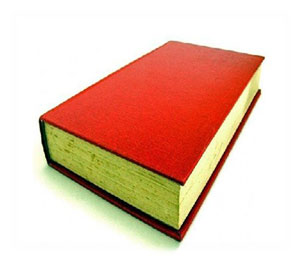 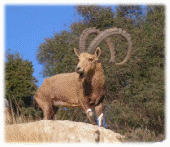 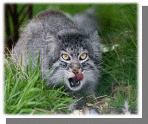 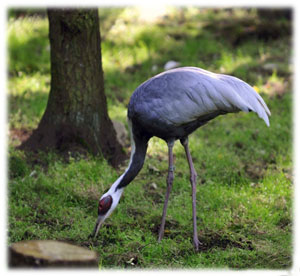 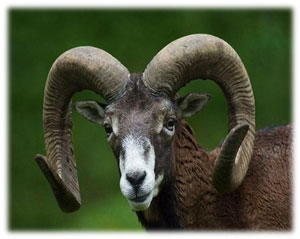 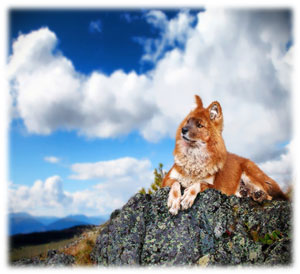 Io XI. References 1. http://en.wikipedia.org/wiki/File:Flag_of_Zabaykalsky_Krai.svg 2. http://en.welcome2russia.ru/russia/?id=2267 3. http://www.roadtripsacrossrussia.com/p/chita 4. http://www.travel2russia.com/destguide/city10.htm 5. http://eng.1september.ru/article.php?ID=200500903 6. Забайкальский край, авторский фотоальбом, А. Леснянский, 159с. |

